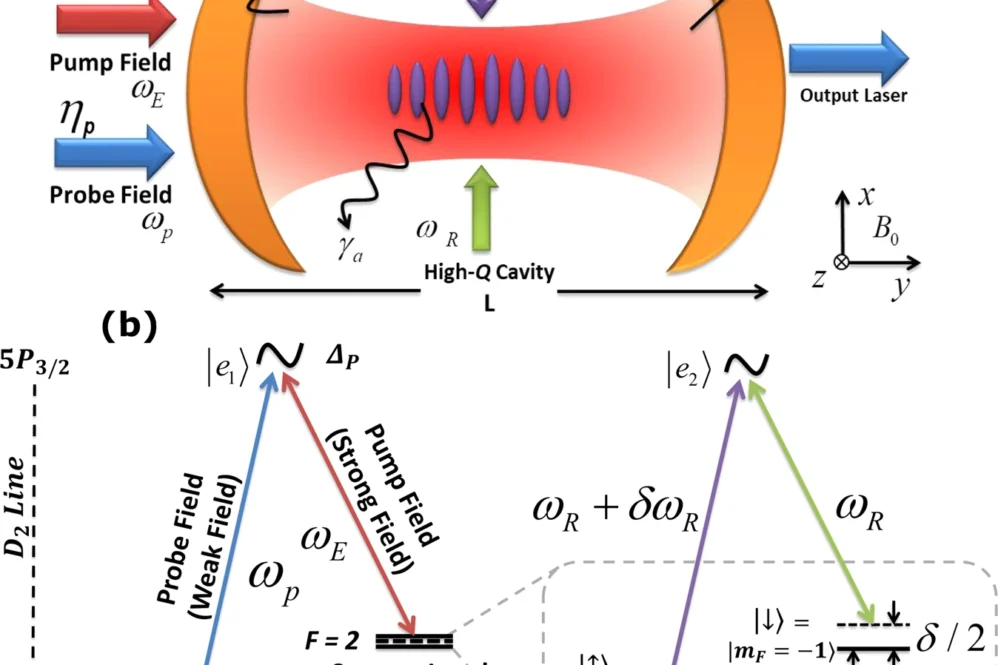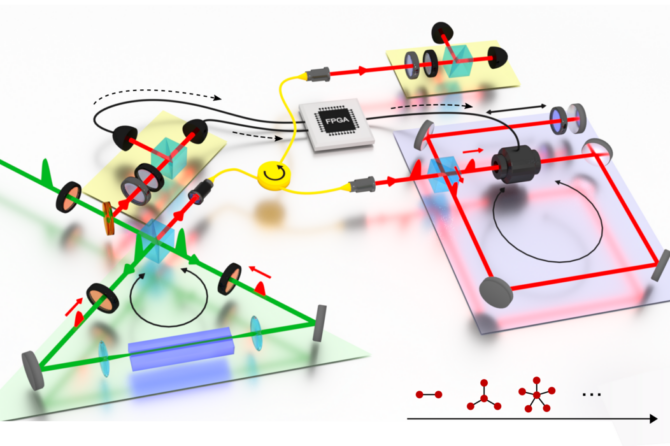In a groundbreaking theoretical study, researchers have demonstrated how topological characteristics emerge in quantum nonlinear optical systems using spin-orbit coupled Bose-Einstein Condensates (BECs) within optical cavities. This work represents a significant advancement in the manipulation of light at the quantum level.
The research centers on a novel configuration where a BEC inside a cavity is driven by both pump and probe lasers, exciting the condensate to an intermediate storage level while undergoing spin-orbit coupling through a Raman process. This arrangement creates dressed atomic states that fundamentally alter the optical transmission properties of the system.
What makes this study particularly noteworthy is the emergence of quantum interference pathways that produce multiple types of Electromagnetically Induced Transparency (EIT) windows. These transparency features undergo complete inversion in atomic damping-induced gain regimes, revealing complex quantum dynamics.
The synthetic pseudo-spin states generated by the spin-orbit coupling impart distinct phases to the probe field, forcing modes in probe transparencies to form Dirac cones. These Dirac cones remain gapless under certain conditions but develop gaps when Raman detuning is introduced. Remarkably, in gain regimes, amplified probe transparencies manifest as gapless topological edge-like states between probe bulk modes, triggering non-trivial phase transitions.
Beyond topological properties, the system exhibits enhanced slow light characteristics due to nonlinear interactions between pseudo-spin states. This combination of topological protection and controllable light propagation opens promising avenues for quantum information processing applications.
The work builds upon established concepts in quantum optics, including electromagnetically induced transparency and optomechanically induced transparency, but extends these phenomena into the topological domain. While traditional topological materials rely on charged particles interacting with magnetic fields, this research demonstrates how neutral photons can acquire topological properties through engineered interactions with quantum matter.
Particularly significant is the system’s behavior in amplification regimes, where atomic damping exceeds cavity decay. Under these conditions, the cavity field experiences gain, leading to dramatic modifications of the transparency windows and enabling topological phase transitions between different optical states.
The researchers also explored how Zeeman field effects influence light transmission dynamics, demonstrating tunability between fast and slow light propagation regimes. This control mechanism provides an additional degree of freedom for manipulating quantum light.
This theoretical framework represents a crucial step toward practical applications in topological photonics and quantum computation, where robust light-matter interfaces with topological protection could enable more stable quantum information processing.
npj Quantum Information, Published online: 09 September 2022; doi:10.1038/s41534-022-00617-0





